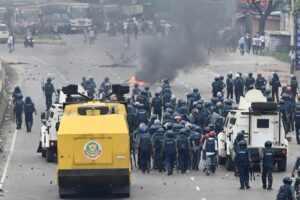This content is restricted to site members. If you are an existing user, please log in. New users may register below.
Bangladesh: Caught Between Regional Drug Epicentres

Reading Time: 2 minutes Bangladesh’s geography has become both a blessing and a curse. Sandwiched between India and Myanmar, two of the world’s recognized drug epicentres, the country now finds itself battling an epidemic it did not create, with its social and security structures under growing pressure. While Bangladesh produces almost no narcotics itself, it has become a major transit point for illicit substances, leading to a surge in addiction and forcing law enforcement agencies to contend with increasingly sophisticated trafficking networks. Myanmar’s Golden Triangle remains a global source of methamphetamine and heroin, and large quantities of these synthetic drugs continue to flow across the Naf River and Bay of Bengal into Bangladesh. India, with its extensive pharmaceutical industry, has been identified by the U.S. government as a source of precursor chemicals and diverted pharmaceuticals, further complicating the problem. The human toll is staggering. The Department of Narcotics Control reports

